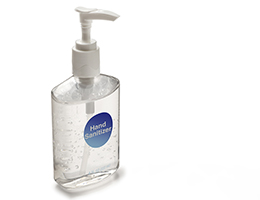
Feb. 16, 2019—In the midst of this year's flu season, you want to keep your hands as germ-free as possible. But if you regularly reach for hand sanitizer, it pays to know a few facts.
A key one: Washing your hands with soap and running water for 20 seconds is typically the best way to clean your hands. If you don't have access to soap and water, a hand sanitizer is a good alternative.
But even then you have to use the right product—and use it properly. Here's your guide:
1. Always use an alcohol-based hand sanitizer. It should contain at least 60 percent alcohol. Non-alcohol based sanitizers may merely keep germs from multiplying—instead of killing them outright. They may also contribute to antibiotic resistance.
Still, be aware: An alcohol-based sanitizer doesn't kill all types of germs. Among them: a stomach bug called norovirus, some parasites and Clostridium difficile, which causes severe diarrhea.
2. Check for dirt. If your hands are visibly dirty or greasy, hand sanitizers may not work well. Stick to tried-and-true handwashing, if possible.
3. Play it safe. Don't use hand sanitizers to remove harmful chemicals, like pesticides and heavy metals. It's unlikely that sanitizers can remove or inactivate them. Wash your hands carefully with soap and water—or as directed by a poison control center.
4. Apply correctly. Use enough sanitizer to cover all the surfaces of your hands and fingers. Then rub your hands together until they feel dry—that should take about 20 seconds. Don't rush. Hand sanitizers may not be as effective if you rinse or wipe it off before it's dry.
5. Be cautious around kids. Keep hand sanitizers out of the reach of young children—they may seem like food or candy. Last year alone, U.S. poison control centers received more than 18,000 calls about hand sanitizer exposure in kids. And a child who swallows more than a couple tastes of an alcohol-based hand sanitizer could be at risk for alcohol poisoning, which can be deadly in severe cases.
Handwashing the right way
There's handwashing and then there's handwashing. To be effective, these five steps are a must.